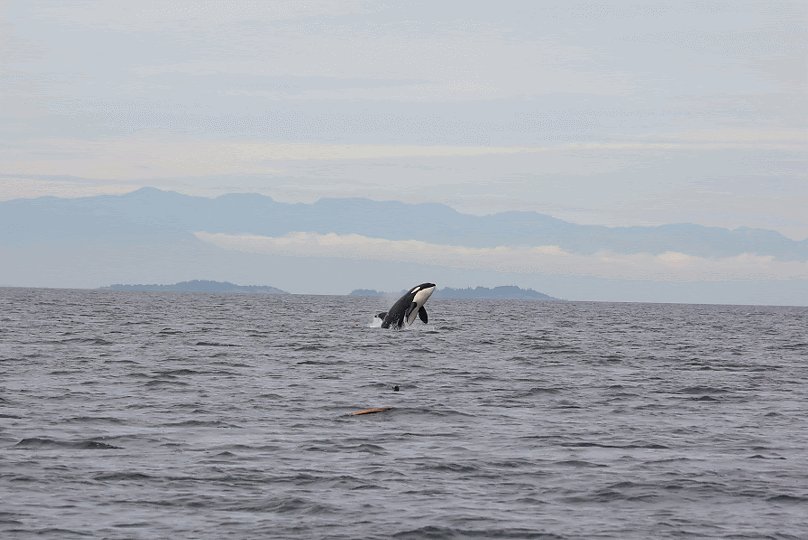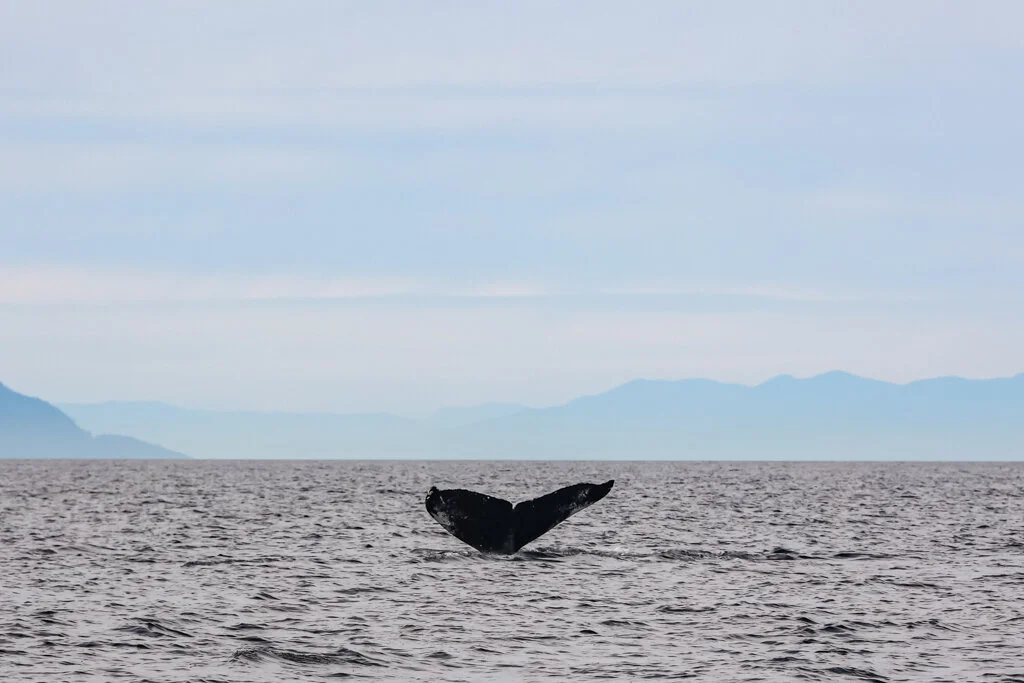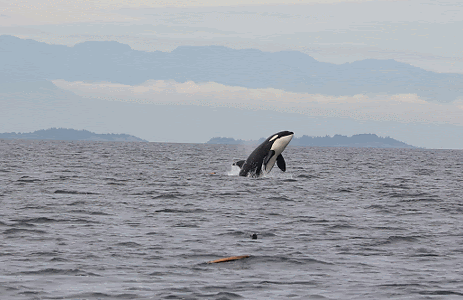September 21st - Double species day with orca and humpback whales!
So many animals around on the 21st! Our two boats had quite the adventure watching both killer whales and humpbacks not too far from Nanaimo.
Only about 30 mins into the tour our boats located three humpback whales who were traveling and doing deep dives. Humpback whales can grow up to 50 feet long or more and come to our nutrient rich waters to feed for the spring, summer, and fall months. They were hunted locally to the brink of extinction and have been making an amazing recovery since their protection in the late 60’s In the past 7 or so years we’ve been experiencing a local “humpback comeback”, with more and more humpbacks returning to our waters each year. With so many negative things in the news it’s especially wonderful to have such a positive environmental story!
Two humpbacks were identified by their fluke and dorsal patterns as Europa and her calf and the third one we were unable to identify so far. Each fluke is unique like a human fingerprint! If you want to try and match up humpbacks that you see out on the water check out Keta Coastal Coastal Conservations free humpback ID catalogue at http://www.ketacoastalconservation.org/keta-catalogue-the-salish-sea.
Other humpbacks that were seen that day by one of our boats were Honu, Vanta, and another unknown.
After watching these whales our boat found orca! They came across a large group of black fins jutting in and out of the water. There was somewhere between 10-15 of them! After getting some photos from a distance and zooming in on the dorsal fins and saddle patches, our crew were able to ID these whales as the T037As, and the T100’s. Orca fins are shaped differently, some have nicks and bends, some are more curved or straighter. The saddle patch, which is the grey area right behind the fin, usually has markings in it that help us to match the individual to our catalogue of individuals.
Knowing IDs makes the encounter that much more interesting, because we can see how a family is interacting with each other and how they interact with other families. Orcas are extremely family oriented and extremely social so there is lots to observe when pods come together like this!
Here are some of the best photos taken on the tours by marine naturalists Rebecca and Beka.
Photo by Beka Pirker
Photo by Beka Pirker
Photo by Beka Pirker
Photo by Beka Pirker
Photo by Beka Pirker
Photo by Beka Pirker
Photo by Beka Pirker
Photo by Beka Pirker
Photo by Beka Pirker
Photo by Beka Pirker
Photo by Beka Pirker
Photo by Beka Pirker
Photo by Beka Pirker
Photo by Beka Pirker
Photo by Beka Pirker
Photo by Beka Pirker
Photo by Beka Pirker
Photo by Beka Pirker
Photo by Rebecca Stirling
Photo by Rebecca Stirling
Photo by Rebecca Stirling
Photo by Rebecca Stirling
Photo by Rebecca Stirling
Photo by Rebecca Stirling
Photo by Rebecca Stirling
Photo by Rebecca Stirling
Photo by Rebecca Stirling
Photo by Rebecca Stirling
Photo by Rebecca Stirling
Photo by Rebecca Stirling
Photo by Rebecca Stirling
Photo by Rebecca Stirling
Photo by Rebecca Stirling
Photo by Rebecca Stirling
Photo by Rebecca Stirling
Photo by Rebecca Stirling
Photo by Val Watson
Photo by Val Watson






































